It’s a well-known fact that SEO and paid search practitioners often work separately — even though both teams share the same goal of developing keyword strategies, content, and tactics to attract more visitors and sales.
But have you ever wondered what would happen if these teams combined their efforts and broke down their silos?
The total sum of their output would far exceed what they can achieve individually, resulting in a powerful incremental lift.
Before I dive deeper into the benefits of combining organic and paid search — and what that means for your ROI — let’s go over some basics.
Table of Contents:
- The Differences Between Paid Search and Organic Search
- The Challenges of Using PPC and SEO Together
- 6 Benefits of Using SEO and PPC Together
- How to Consolidate PPC & Organic Insights in seoClarity
The Differences Between Paid Search and Organic Search
Digital marketing tends to include both paid ads and organic search, but they rarely work together. Why? Well, there are a few key differentiators between paid and organic search that often contribute to their separation.
Presentation In the SERPS
All queries will return organic results, but PPC ads will only appear if an ad has been bought as a part of a PPC campaign.
Organic search results can appear as a link, or they can present themselves as a SERP feature such as the Answer Box, images, news, etc.
The placement of an organic listing is dependent upon the search engine’s algorithm whereas paid search listings always appear at the top of the search results.
PPC placements are also indicated as such with the term “Ad” next to each paid listing.
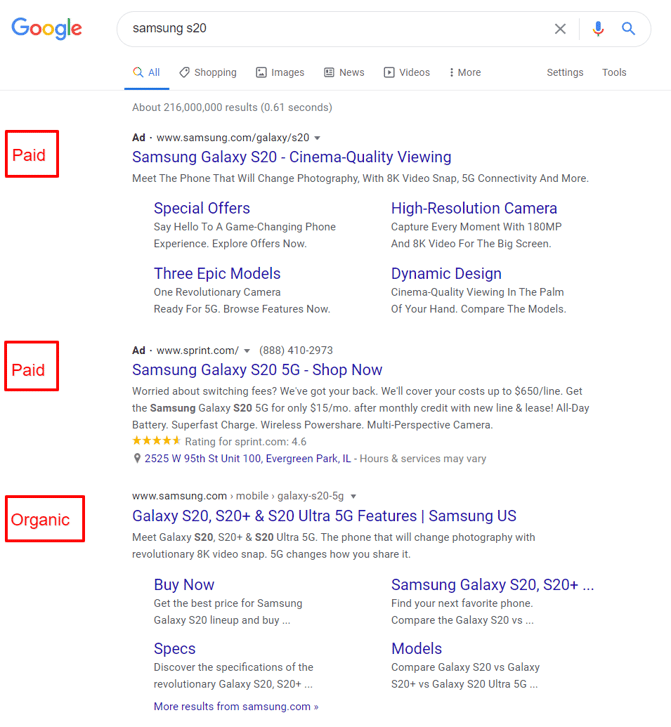
(Paid search placements are labelled as such on the SERPs.)
The Cost of PPC vs SEO
SEO is “free” in that no direct payment is made to appear on the SERP — only optimization efforts can get you there.
Paid search listings, as the name suggests, only appear in search results if someone made a direct payment.
Level of Control and Investment
Another key difference between PPC and SEO is that paid search typically gets much more investment.
Think about it, paid search is like a faucet that you can turn on or off: you open the tap (i.e. spending) and are guaranteed visibility and traffic. Plus, you have full control over when to turn that tap off.
On the flip side, SEO is influenced by a myriad of external factors that can affect your rankings and organic traffic, such as unpredictable algorithm updates, making it a more complex and less controllable marketing strategy.
The control paid search provides means it's much easier to demonstrate clear ROI which is why most of the digital marketing investment often goes there.
But what if digital marketers could look past those differences and focus on the more important angle: driving optimal ROI and improving both channels by integrating them together.
The Challenges of Using PPC and SEO Together
The challenge with integrating both teams has a lot to do with a lack of understanding of how closely the goals of each channel align.
Take a look at this comparison of the common KPIs of each marketing strategy:
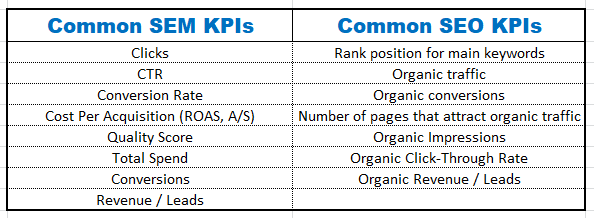 (Paid and organic search teams are after the same KPIs.)
(Paid and organic search teams are after the same KPIs.)
Paid and organic are targeting the same user behavior, search visibility, and clicks — they’re after the same thing! Yet this separation still exists.
Organizations fail to fully understand the opportunities behind optimizing between both channels. Consider how common it is for companies to switch off paid search for keywords for which they rank organically in the first position.
And then, there’s the issue of budget allocation.
What people may not realize is how little investment is given to organic compared to PPC despite how much traffic SEO efforts drive and how much SEO influences the paid search channel.
In research across 500 of our clients, we found that organic search drives 75% of traffic, yet receives only 5% of investment.
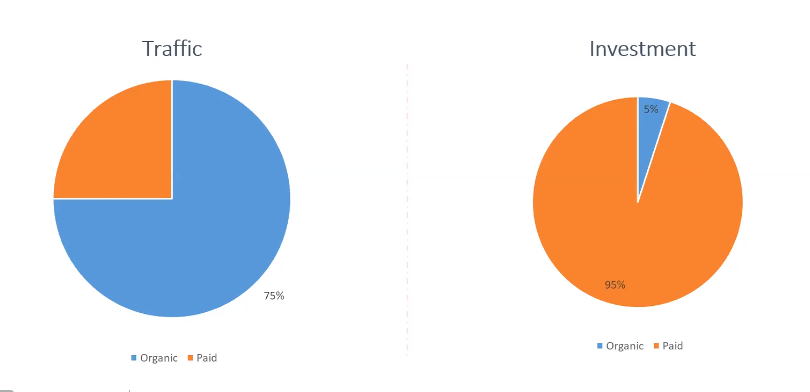
(Organic drives the majority of search traffic, but receives a fraction of the investment.)
Aligning both teams offers incredible opportunities to boost online visibility and achieve business objectives to optimize results for both channels.
The Benefits of Using SEO and PPC Together
SEO and PPC combined contribute to 65% of traffic for most of our clients and more than 50% of conversions. When working together, organic drives huge long term improvements for paid and vice versa.
Here are a few advantages of PPC and SEO working together:
- Better Keyword Targeting
- Increased Understanding of Keyword Intent
- Improved Landing Page Relevancy for SEM
- Enhanced Relevancy of SEO Content
- A More Strategic Allocation of Digital Marketing Costs
- Increased Revenue
Let's dive into each benefit in more detail.
#1. Better Keyword Targeting
Phrases that work particularly well for one channel will often deliver similar results for the other.
And so, exchanging keyword data across SEO and SEM teams could quickly lead to identifying new, untapped opportunities.
What’s more, insights from each team could reveal specific phrases that engage audiences in distinct locations or markets, leading to an even further boost in keyword performance.
But all this can only happen if each team shares its keyword performance data.
The insights that SEO data offers can lead to better keyword relevance which will improve your ad’s quality score and placement on the SERP.
#2. Increased Understanding of Keyword Intent
Fact: Click-through rate is a significant factor for each channel. It confirms the relevance between target keywords and the copy used in the PPC ad or search engine listing.
Needless to say, combining this insight would allow each team to build a solid picture of unique phrases that carry the strongest relevance to the target audience.
For example, IT Governance uses a similar copy in their Adwords ads and meta-tags on a page targeting the same commercial keyword.
Here’s their ad copy:

And the SERP Listing:

As you can see, they present the target audience with twice as many touch points per keyword, both of which reference a specific customer problem (complying with the upcoming EU data protection changes) and offer a selling point (learning from the experts).
Insights into the user intent allowed them to influence their approach to writing the perfect meta description for both paid and organic.
#3. Improved Landing Page Relevancy for SEM
It’s no secret that quality score is a major factor contributing to Adwords ads success. If you’re not familiar with the term, quality score describes the quality and relevance of PPC ads and landing pages to which you’re sending the ad traffic.
This score affects the two most important aspects of a SEM campaign:
- Ad rankings - the better the quality score, the higher positions at which your ads can appear
- Cost - a better quality score means lower cost per click for those higher rankings
What’s more, its impact on cost per conversion (CPC) is irrefutable. The higher the quality score, the lower CPC your ads achieve.
A major part of the quality score relates to landing page quality, a factor that SEOs can contribute a lot of insight to.
Take a look at the most important quality score factors:
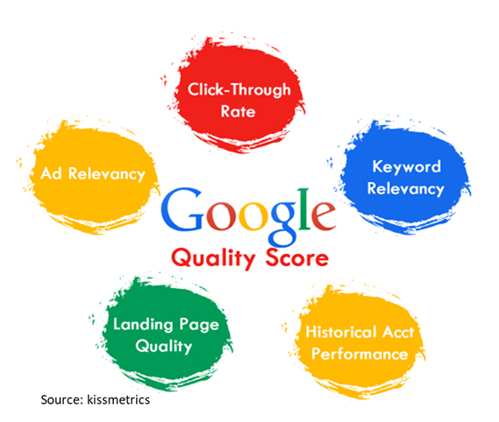
Four of the factors relate strictly to your ad setup; something SEOs wouldn’t be able to affect much. However, the content you feature on a landing page is universal between SEO and SEM. And, as it happens, the better you optimize the page for SEO, the greater the quality score it will help you achieve for SEM.
Here are a few ways to improve landing page quality that benefit both SEO and PPC:
Remove Duplicate content. Having a similar content across a number of pages can greatly affect your rankings. It can also make your page less relevant to the ad sending it traffic.
Implement Correct and uniform schema markup. Properly used SEO schema markup helps search engines better understand the content on a page. For SEO, this understanding facilitates the display of more relevant information in SERPs, enriching the user experience. Similarly, for paid search, it enables Google to evaluate the relevance of a page in relation to the assigned AdWords ad, ensuring a tighter alignment between user queries and ad content.
With our free Schema Builder, implementing structured data is as simple as point and click.
Decrease page load time. Page speed describes the length of time it takes a browser to display all the content on a specific page. And needless to say, it’s one of the most crucial ranking factors today (particularly on mobile).
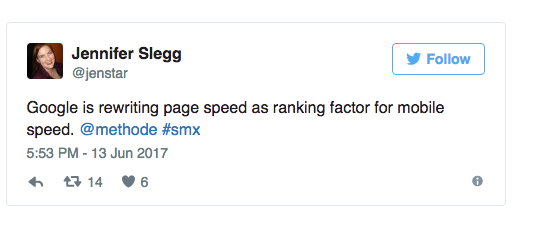
But user experience, and particularly page speed affects ad performance too. As Google explains:
Your landing page experience affects not only your Quality Score, but also your Ad Rank and advertising costs.
Furthermore, the search engine adds (cited via Search Engine Land):
If it takes too long for your website to load when someone clicks on your ad, they’re more likely to give up and leave your website. This unwelcome behavior can signal to Google that your landing page experience is poor, which could negatively impact your Ad Rank.
TIP: seoClarity's Page Speed tool allows you to analyze loading time for every page on the site, and discover potential issues that prevent them from opening faster.
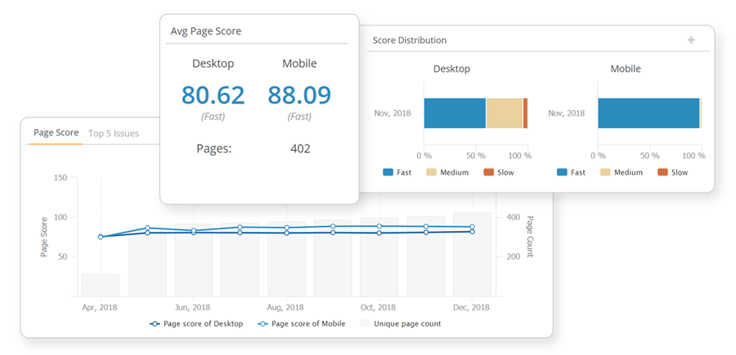
#4. Enhanced Relevancy of SEO Content
As SEOs, we have a serious challenge when it comes to accessing relevant data. Analytics hides most of our keywords behind the “(not provided)” label.
And although the Search Console now reports on the search phrases visitors used to reach a site, the data is still far off from what we used to have. As such, it's no surprise that SEOs often miss opportunities to make their content even more relevant to the searcher’s intent.
With SEM data, however, they could boost content relevancy by:
- Identifying the most relevant keywords to use in the content, and then,
- Applying them to the core page elements (i.e., title, headings, body copy, meta-tags, etc.)
It’s that simple. But like with everything else I’ve talked about in this post, it requires both departments to work in tandem.
#5. A More Strategic Allocation of Digital Marketing Costs
There are two different ways that integrating SEO and PPC can help you allocate marketing expenses more strategically at your company.
- Identify important PPC keywords with low conversions/ROI
- Identify high-cost PPC keywords with high organic rankings
Let’s take a look at them in turn.
Identify important PPC keywords with low conversions/ROI
First, look at your PPC conversion rate to pick out keywords that have a low rate of conversion (this number is something only you can determine based on your business operations) and see where that keyword ranks in organic.
Imagine this example: The PPC conversion rate is 1.6%, which is significantly lower than the rate of conversion for other keywords in paid. Yet, the impressions for that keyword cost $3,500.
It’s currently ranking in position 4 in organic. If you could get that in position one, like the majority of the others, you could pull back or reallocate spend on paid (therefore reducing cost) and still get the same amount of traffic from your higher rank position.
Identify high-cost PPC keywords with high organic rankings
This method requires testing a pullback in PPC spend to evaluate incremental savings vs. incremental loss in revenue. Let me explain.
There’s a long-standing debate in the online marketing world over whether or not you should bid on your own brand keywords. One argument is that your competitors may bid on your brand terms, but the other side of the argument is that your brand will always be number one for organic.
Recommended Reading: Competitive Paid Search: When Competitors Conquest Your Brand Terms
The decision depends on the data, so you'll need to weed out keywords where PPC cost is high, and organic ranks well, and consider pulling back on paid.
In the seoClarity platform, you can complete this keyword research analysis in seconds using our PPC vs Organic reporting tool. It integrates data from each channel so SEO data can be viewed next to PPC spend.
Again, this test will vary for each company based on the data and the outcome, but you need to determine this: If you stop paying for PPC for your own brand names, would the top rank position in organic be enough to capture traffic and have a good ROI through SEO versus paying a lot of your brand name.
#6. Increased Revenue
The combined PPC and organic approach is best for your bottom line when it comes to money saved, but it also impacts money earned.
Here’s what you should look for in the data to increase your revenue: high ROI PPC keywords where organic is lagging.
If you have keywords that perform well in PPC, but your organic rank is higher than position 5, those are keywords that you can optimize for organic.
Imagine this example: The conversion rate for PPC is high, at 9.8%. It’s had a total spend of $186.97 and has brought in $1,303.25. That’s a great ROI for that keyword.
However, its organic rank is position 12, which is definitely off the first page. If you optimize that keyword and bring it onto the first page of the SERP, you can further increase your search visibility and capture that additional market share.
The PPC vs Organic Reporting Tool in seoClarity also makes this process a breeze. Simply filter keywords results by selecting the "organic rank" option and entering >5. This will narrow down the keyword list to where the organic rank is greater than five (and most likely pushed far down the SERP).
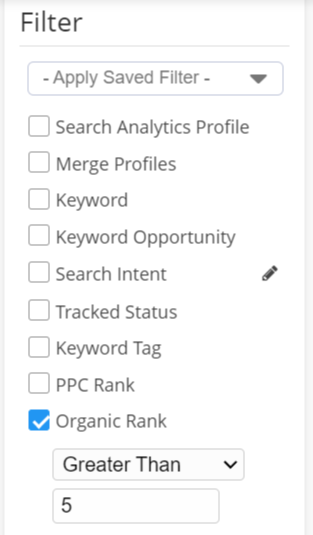
How to Consolidate PPC & Organic Insights in seoClarity
As you’ve seen, there are multiple reasons to bring PPC and organic together, from increased search visibility and traffic to improved content relevancy, and yet the channels are still managed in silos.
Our PPC and Organic reporting tool breaks down these barriers by giving teams the information and data they need to identify opportunities to reduce costs, increase revenue, and drive the company’s bottom line.
Let’s look at a breakdown of this within the seoClarity platform.
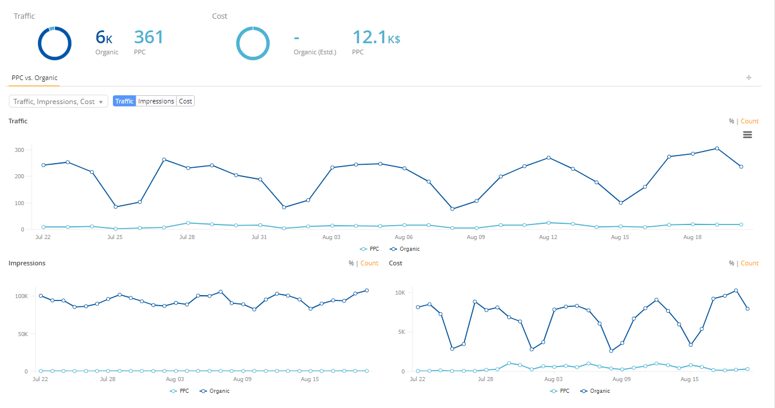 (An overview of the PPC vs. Organic report in seoClarity.)
(An overview of the PPC vs. Organic report in seoClarity.)
Below the trend charts is a list of keywords with a variety of metrics which you can show or hide depending on which type of analysis you want to run:
- Quality Score: This comes from paid search advertising. Track this over time as you optimize your landing pages to work toward a better quality score.
- Traffic (organic and PPC): The amount of people who clicked through to your ad or organic listing.
- Rank (organic and PPC): Paid and organic rank position on the SERP.
- Cost: The organic cost estimate is calculated by leveraging the paid search costs. If you were to get the same traffic from organic as you do for paid, that is the organic estimate.
- Average CPC: Cost per click.
- Impressions (organic and paid): The amount of users who saw your ad or organic listing on the SERP.
- CTR (organic and paid): Impressions divided by traffic. This metric is extremely helpful for comparing organic and paid, as you’ll see in the examples below.
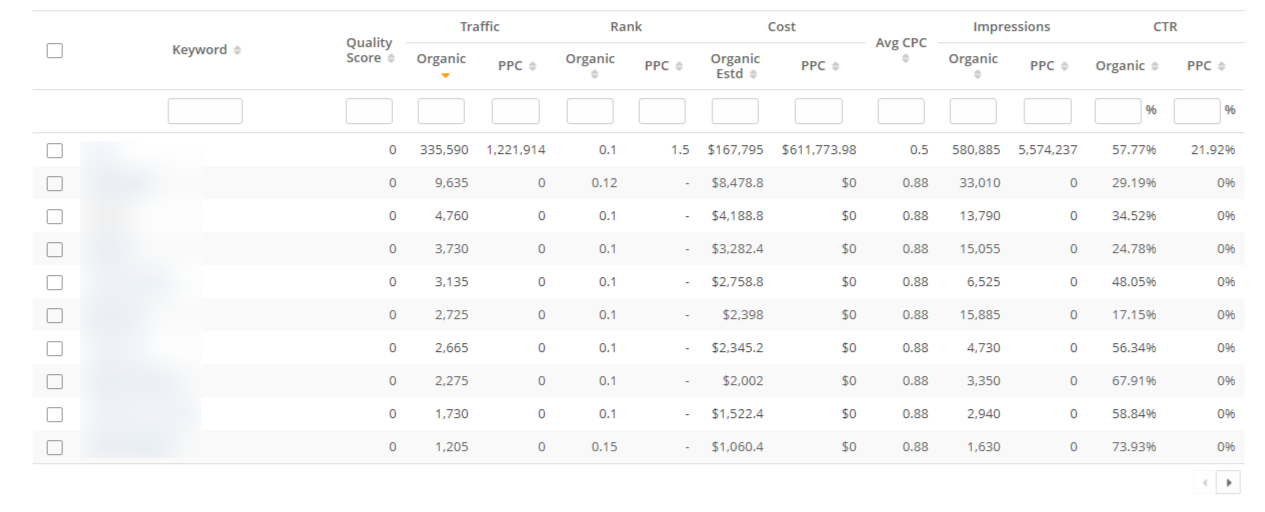 (The keyword list for a Paid vs. Organic report with corresponding metrics.)
(The keyword list for a Paid vs. Organic report with corresponding metrics.)
Note: The data points shown above are dummy data and are not reflective of actual performance metrics.
How to Identify Keyword Gaps Between Paid and Organic at Scale
As you’ve seen, all the necessary metrics are at your disposal for comparing organic and paid, and locating the opportunities that fit your business goals.
But with new advanced filtering, you can also quickly identify gaps between paid and organic.
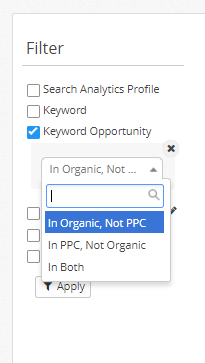
(Instantly locate keyword opportunities in both organic and paid.)
Applying this filter will automatically edit the keyword list to locate those that match the criteria. Other filters include:
- Search Analytics Profile
- Keyword
- Search Intent
- Keyword Status
- Keyword Tags
Conclusion
Any digital marketer can benefit from having their marketing strategy shift from SEO vs PPC to SEO and PPC.
Again, here are the benefits of those channels working together:
- Better Keyword Targeting
- Increased Understanding of Keyword Intent
- Improved Landing Page Relevancy for SEM
- Enhanced Relevancy of SEO Content
- A More Strategic Allocation of Digital Marketing Costs
- Increased Revenue
But the real value lies with being able to see the metrics and analyze both organic and PPC together through the same lens. This unique view will let you drive the company’s bottom line.
The combined PPC and organic approach is best for reducing spend and earning revenue, and I would love to show you how this can impact your company.
Schedule a demo today to see how our platform can bring your PPC and SEO data together in one view for a unified marketing strategy.
Editor's Note: This blog was originally published in October 2017 and has been updated to reflect advancements in our industry.



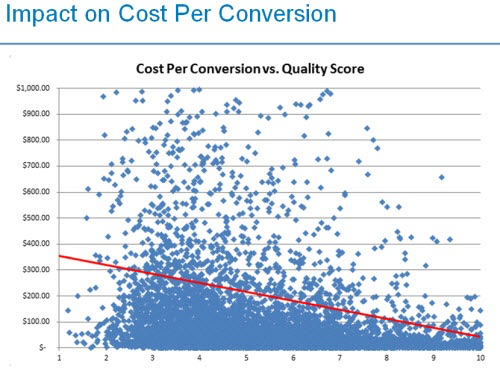

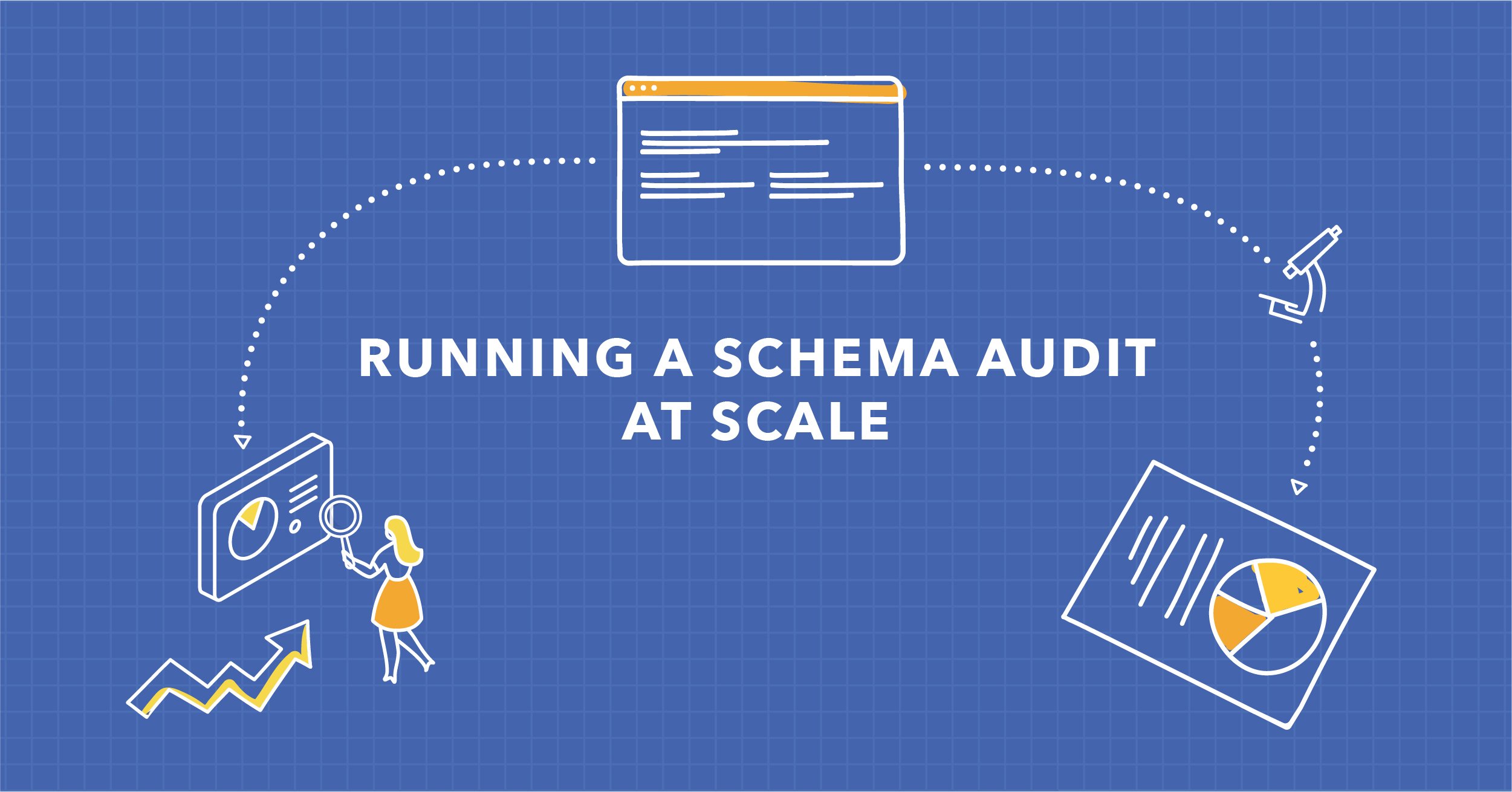
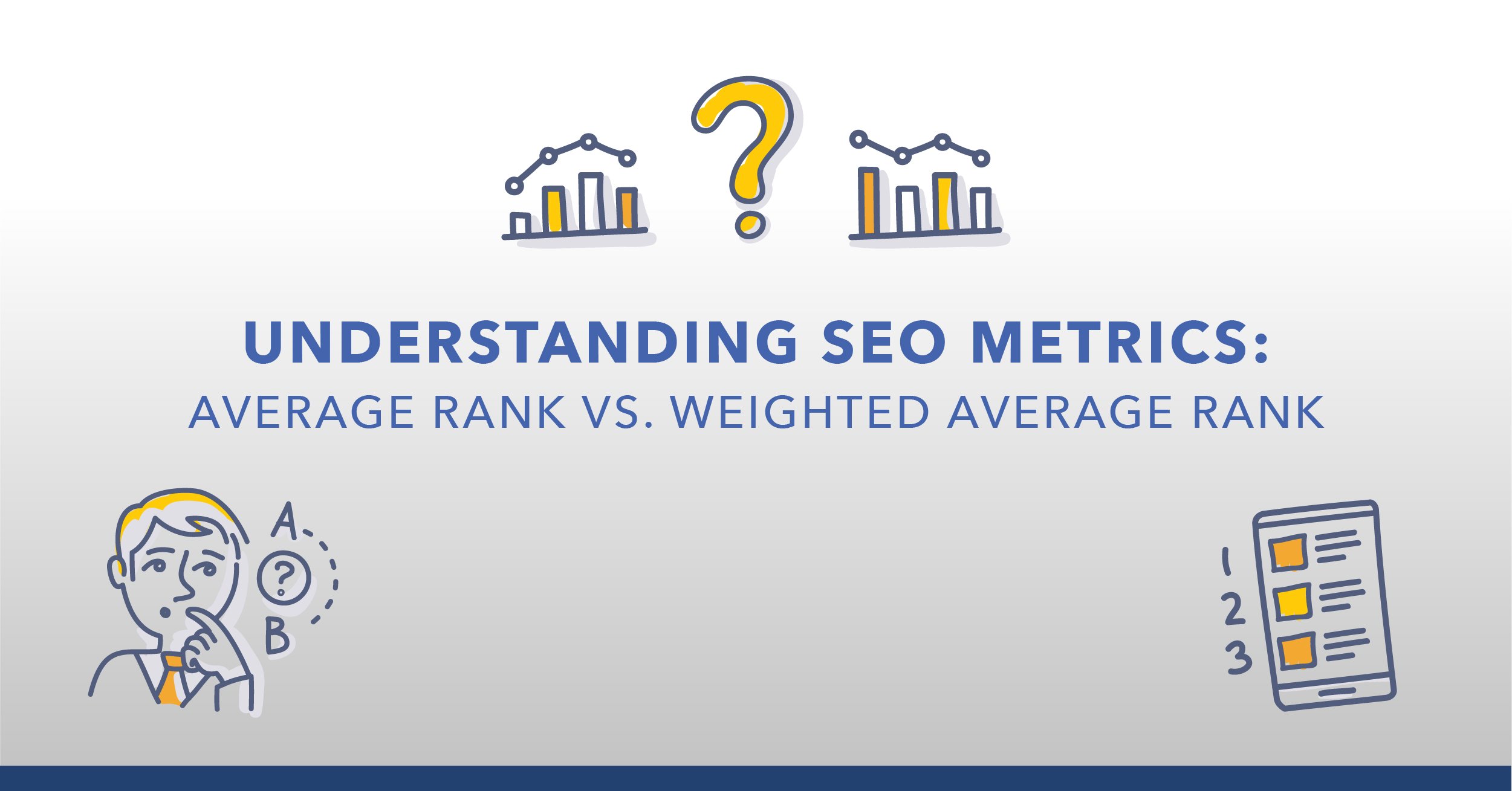

1 Comment
Click here to read/write comments